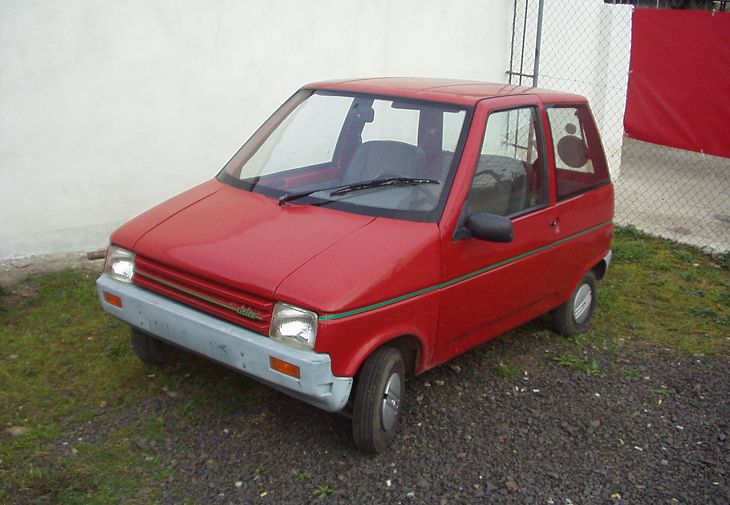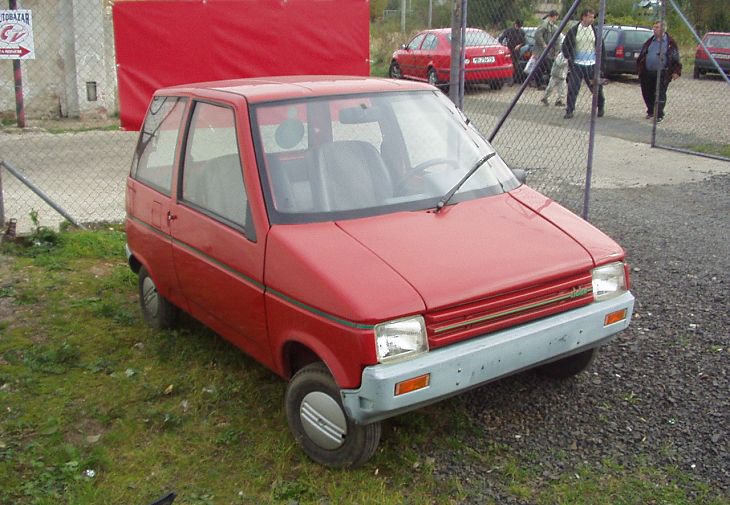Description
The Ligier 50 L was a compact and distinctive French microcar developed in the early 1980s as part of Ligier’s expanding “voiture sans permis” lineup—vehicles that could be legally driven in France without a full driving licence. Following the success of the earlier JS4, the 50 L represented a step forward in comfort, styling, and refinement, combining Ligier’s engineering precision with practical, everyday usability. It was aimed at customers seeking personal mobility in rural or urban settings, especially older drivers or those looking for a lightweight, economical vehicle for short trips.
Introduced around 1982, the Ligier 50 L retained the same fundamental design principles as the JS4 but featured a more developed body and improved mechanical components. At its core was a small single-cylinder 49 cc engine, supplied by Motobécane or Lombardini, depending on production year and market. This air-cooled unit produced around 3 to 4 horsepower, sufficient to propel the car to the regulated maximum speed of 45 km/h (28 mph). The power was transmitted through a continuously variable transmission (CVT), ensuring smooth, clutchless operation—a vital feature for accessibility and ease of use.
The chassis was built around a sturdy tubular steel frame, providing rigidity and strength while keeping the weight under 350 kilograms. The suspension system was basic but effective: independent at the front with coil springs and dampers, and a semi-rigid axle at the rear. Braking was handled by small drums on all four wheels, adequate for the car’s low weight and modest speed. Steering was light and direct, making the 50 L exceptionally easy to manoeuvre, particularly in narrow French village streets or urban environments.
Visually, the Ligier 50 L marked a clear aesthetic evolution from the angular, almost industrial look of the JS4. It featured smoother body lines, rounded edges, and a more cohesive design that gave it a friendlier and more car-like appearance. The front end incorporated integrated headlamps within a neat plastic fascia, while the sides were more sculpted, giving the car a slightly aerodynamic profile by microcar standards. The tall cabin with large windows provided excellent visibility, and the short overhangs contributed to its compact footprint, ideal for tight parking spaces.
The body was constructed primarily of glassfibre-reinforced plastic panels mounted to the frame, a material choice that made the car rustproof and lightweight. The “L” in the model name likely referred to “Luxe” or “Luxury,” reflecting Ligier’s intention to create a more comfortable version of its basic runabout. The rear of the car was designed with a lift-up hatch, offering access to a small but practical luggage compartment.
Inside, the 50 L was surprisingly well appointed for a vehicle of its size and purpose. The cabin accommodated two adults comfortably, with simple bucket seats trimmed in vinyl or fabric. The dashboard featured a minimalist layout, with essential instruments such as a speedometer, fuel gauge, and warning lights. Controls for lighting, wipers, and heating (when fitted) were logically placed, and the use of durable materials reflected Ligier’s emphasis on practicality and longevity. Sound insulation was limited but adequate, considering the car’s small engine and low cruising speeds.
Driving the 50 L was an uncomplicated experience. The engine started via an electric starter or pull cord, depending on the variant, and the automatic CVT transmission required no gear changes—simply press the accelerator and go. The car’s lightweight build gave it surprising agility, and its low-speed handling was stable and predictable. On open roads it felt secure, though its performance was obviously modest, being designed primarily for short commutes or local errands.
One of the 50 L’s key selling points was its accessibility. Because it fell into France’s “voiture sans permis” category, it could be driven by individuals as young as 14 (later 16) or by those who had lost their standard driving licence. This made it especially popular among rural residents, retirees, and younger users seeking mobility independence. Its ease of maintenance and extremely low fuel consumption—typically less than 3 litres per 100 km—added to its appeal.
Production of the Ligier 50 L continued into the mid-1980s, when it was succeeded by more modern models such as the Ligier JS6 and JS8, which built upon its mechanical base while introducing improved styling and refinement. Despite being overshadowed by these later designs, the 50 L played an important transitional role in Ligier’s evolution from a racing constructor into a leading manufacturer of licence-free vehicles—a market it would dominate for decades to come.
Today, the Ligier 50 L is remembered as an early example of the brand’s commitment to quality and innovation within the microcar segment. Its blend of reliability, practicality, and charming simplicity made it a fixture of small French towns and countryside roads in the 1980s. Though modest in performance, it represented freedom and independence for thousands of people who otherwise could not drive—a testament to the social as well as technical significance of Ligier’s early microcars.
The Ligier 50 L stands as a symbol of a uniquely French automotive tradition: a car designed not for speed or luxury, but for accessibility, efficiency, and everyday life, built by a company whose engineering roots were born on the racetrack yet capable of serving the quiet roads of rural France with equal ingenuity.

